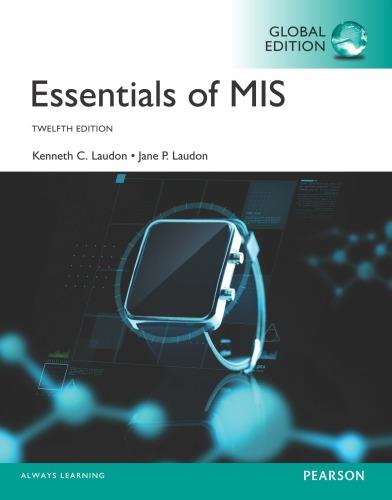Question
1. The cost of life insurance can be viewed as: a. The debts of a family head with outstanding financial obligations b. The chance of
1. The cost of life insurance can be viewed as:
a. The debts of a family head with outstanding financial obligations
b. The chance of expected loss or gain of the policy
c. The premium multiplied by a future earnings factor
d. The difference between what you paid for a policy and what your beneficiary will receive
2. The traditional net cost method of life insurance is misleading because of: a. The time value of money is not considered
b. The loss ratio of life expectancy
c. The rate of inflation varies from year to year
d. The net cost cannot be determined until after death
3. The surrender cost index measures the cost of life insurance: a. When known premium taxes and fees are determined
b. If a person surrenders the policy
c. Because of the inability to measure actual costs
d. At the time of the death of the insured
4. In using interest-adjusted cost data to compare life insurance policies a person should: a. Compare policies using an adjusted mortality table
b. Keep in mind that interest rates are highly variable
c. Ignore small variations in the cost index numbers
d. Be aware of specific premium charges
5. There are several types of annuities including: a. Locked
b. Fixed
c. Unlocked
d. All of the above
6. An annuity can be defined as:
a. A complex branch of life insurance
b. A periodic payment that continues for a fixed period or the duration of a life c. A mutual fund for a fixed period or the duration of a life
d. When a currency is traded on an exchange
7. Variable annuities typically provide a guaranteed death benefit: a. True
b. False
c. True only for locked variable annuities
8. An individual annuity is nonqualified and doesn't qualify for most income tax benefits: a. False, an individual annuity is always qualified
b. True, it's considered an investment and taxed accordingly
c. False, the income tax benefits encourage individuals to invest
9. The United States leads the world in: a. Low cost health care
b. Low cost pharmaceuticals
c. Total spending on health care
10. The Affordable Care Act individual mandate:
a. Required most people in the U.S. to obtain health insurance
b. Subsidized citizens financially if they did not obtain health insurance
c. Mandated health care at most hospitals across the country
d. Mandated individual persons under 26 years of age to remain on their parent's pol
11. The earliest proposals by a U.S. president to reform health care began: a. With President Obama in 2008
b. With President Roosevelt in 1912
c. With President Bill and Hillary Clinton in 1992
d. With President Richard Nixon in 1968
12. The Affordable Care Act allowed;
a. Young people to remain on their parent's health insurance policies until age 26 b. Health care services up to $100,000 per year
c. A provision prohibiting insurers from canceling policies for non-payment
d. All of the above
13. Employee benefits provided by employers:
a. Must include disability plans to receive governmental approval b. Were prohibited by law between 1910 and 1925
c. Are employer sponsored benefits other than wages
14. Group insurance is coverage of many persons under one contract:
a. False, a group of companies purchase all their policies together from one company b. True, a master contract is formed between the policyholder and insurer
c. False, a group is covered by many policies but paid for by the company
15. Some employers self-insure part or all of the benefits provided to employees: a. True
b. False
16. Group insurance plans can be purchased on the Affordable Care Act health insurance exchange: a. True
b. False
17. The definition of an early retirement age is: a. 5912
b. 62
c. Before 65 if the employee is vested
d. The earliest age that a person can receive retirement benefits
18. Regarding retirement, vesting refers to:
a. The ceiling of benefits
b. The date of retirement
c. The employee's right to the employer's contributions d. The investment of mutual funds
19. A federal tax penalty will be applied to early distributions of qualified plans in the amount of: a. 5%
b. 7.5%
c. 10%
d. There is not a federal tax penalty for early distributions of qualified plans
20. A tax penalty can be avoided on early distributions:
a. If current taxes are paid in full for the previous year
b. It the retiree has a dependent in the home under the age of 18 c. If the retiree has a qualified disability
d. There is not a tax penalty for early distributions
21. Social insurance programs are designed to provide:
a. Discounts on auto policies for lower income citizens b. A program to increase job opportunities
c. Lower cost interest rates for home mortgages
d. A base of economic security to citizens
22. Characteristics of social insurance include all of the following except: a. They are compulsory
b. The benefits are prescribed by law
c. There is not a means test
d. Full funding is necessary
23. Social Security is an example of social insurance: a. True
b. False
c. Only for those born before 1939
24. Social Security is predicted to be solvent at current levels until 2035: a. True
b. False
25. Kansas has never considered expanding Medicaid: a. True
b. False
Step by Step Solution
There are 3 Steps involved in it
Step: 1

Get Instant Access to Expert-Tailored Solutions
See step-by-step solutions with expert insights and AI powered tools for academic success
Step: 2

Step: 3

Ace Your Homework with AI
Get the answers you need in no time with our AI-driven, step-by-step assistance
Get Started


